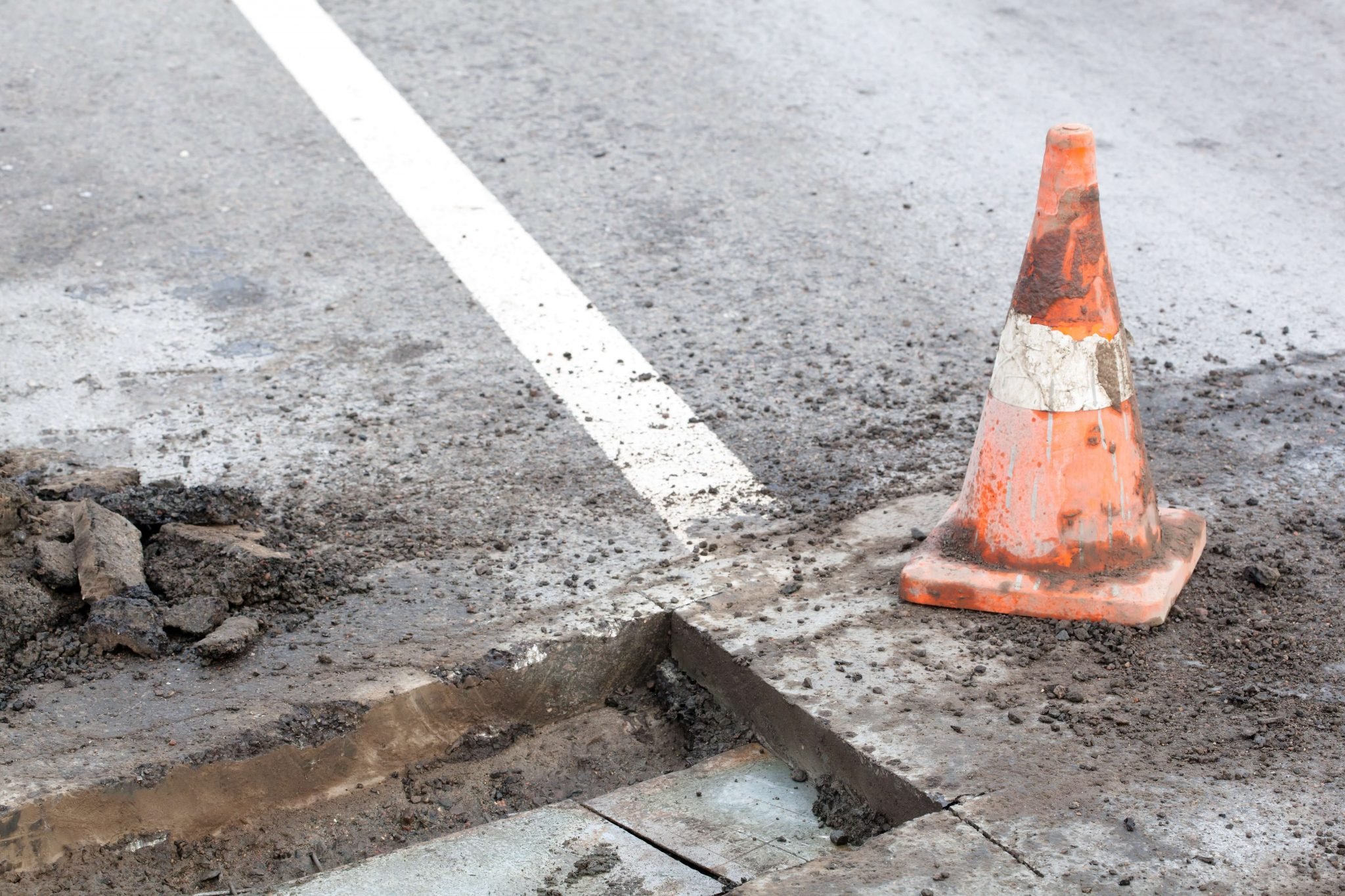LEARN MORE ABOUT OUR ASPHALT SERVICES LEARN MORE
Asphalt Crack Filling Services

What is crack filling/sealing? Crack sealing is a method in which hot sealant is applied to working cracks to prevent water intrusion
What are working cracks? Working cracks are horizontal and/or vertical movements in cracks greater than 0.1 inches. An example of working cracks is a transverse crack.
Understanding crack sealants Crack sealants are rubberized and have the ability to seal the crack while staying flexible with the pavement’s movement. Beneficial for active cracks that continue to extend in size and severity over time, crack sealants stop water and debris from entering the crack, protecting the longevity of the pavement.
Crack filling Crack filling is the placement of asphalt emulsion into non-working cracks to reduce water infiltration and to reinforce the adjacent pavement. What are non-working cracks? Non-working cracks are horizontal and/or vertical movements in the crack less than 0.1 inches. Examples of non-working cracks include longitudinal, diagonal and alligator cracks. In contrast to crack sealing, crack filling treats pavement that doesn’t show significant movement.
If you have cracks in your asphalt, it’s important to address them sooner rather than later. Not only do the cracks make your asphalt look bad, but they can actually lead to bigger problems down the road as well. Seal or fill cracks to prevent water and everything else from penetrating the crack and making it worse. This will help avoid further erosion, while also making your asphalt surface look better and provide more smoothness.
How Much Does Crack Filling Cost?
As with almost everything else, the cost of your crack filling services will depend on the scope and severity of your problem. In almost every case, though, it will pay for itself by delaying your need for complete asphalt resurfacing. Resurfacing your asphalt is much more expensive than filling individual cracks, so regular maintenance can help save a lot of money over time.
In most cases, having your asphalt cracks filled and sealed regularly can as much as double the life expectancy of your pavement or parking lot. Count on an experienced Phoenix asphalt repair company to follow best practices and use high-quality materials that will last. Depending on the current pavement, our team at One Stop Asphalt will use the most appropriate filler or sealant that meets your needs.
How Often Should You Get Asphalt Cracks Filled?
Depending on your unique situation, we normally recommend that you get your asphalt cracks filled at least once a year. Such a regular schedule doesn’t give pavement cracks as much time to get bigger or more severe, and is crucial to prolonging the life of your asphalt. A professional asphalt filling company can help prevent the cracks from branching out into a web and becoming more expensive to repair.
7 TYPES OF CRACKS
Before you choose which method is best for treating your pavement cracks, it is critical to understand the types of cracks that can occur:
1. TRANSVERSE CRACKS: The crack extends in a perpendicular fashion to the centerline or laydown direction of the pavement. Cause: thermal shifts and are the first to appear.
2. LONGITUDIAL CRACKS: Longitudinal cracks run parallel to the centerline or laydown direction of the pavement and appear later than transverse cracks. Cause: Poor lane join construction, pavement shrinkage, hardening of the asphalt and shifts in temperature.
3. EDGE CRACKS: Edge cracks develop between the edge of the pavement and concrete curbs. Cause: Seasonal thaw cycles that result in widening and deepening of the crack.
4. SEAM CRACKS: Seam cracks develop along joints of pavement. Cause: Poor paving procedures
5. BLOCK CRACKS: Block cracks develop in square pieces and are spaced between 4 to 12 feet. They often appear at the end of the pavement life. Cause: improper construction of base courses or lack of drainage.
6. REFLECTIVE CRACKS: The cause of Reflective Cracks are due to the changes in the movement of the sub-base, causing the surface material to crack. Correcting sub-base courses can help eliminate reflective cracks.
7. ALLIGATOR CRACKING: Alligator cracking is a series of interconnecting cracks that are extensive, close together and resemble an alligator’s skin. Cause: Deterioration in the asphalt from repeated traffic loading.
Choosing the right method of crack repair
When deciding whether to fill or seal a crack, the best option is to speak to a professional. They will carefully evaluate the type of crack, expected movement of the pavement and whether it is a working or non-working crack. Transverse cracks are usually the first to appear in pavement surfaces, but other types of cracks can develop at the same time.
– Crack filling: Often the best option for non-working cracks with moderate to no edge deterioration.
– Crack sealing: Often best option for cracks with limited edge deterioration.
* IMAGES & VIDEOS COMING SOON!*
Contact Information
EMAIL US RIGHT NOW
If you have any questions, fill in the form below, and we will contact you as soon as possible.
WHERE WE ARE
3616 W Whitton Ave
Phoenix, AZ 85019
ROC #319941
CONTACT
(602) 595-9658
